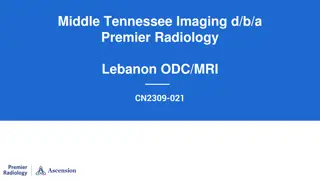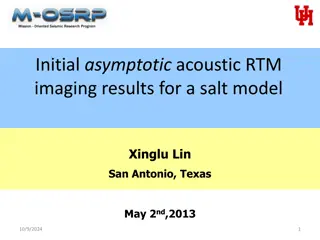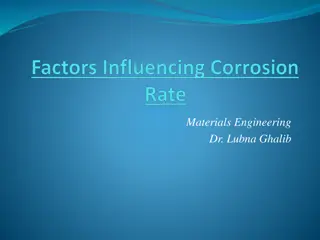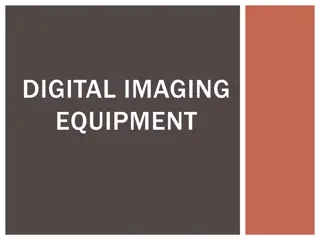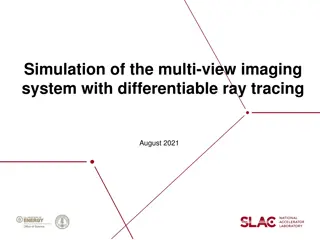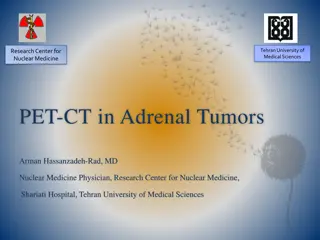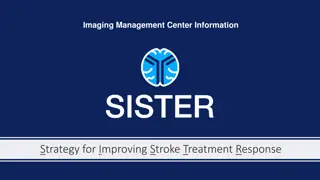Factors Influencing Recall Rate and Imaging Technologies in Mammography
Understanding the factors that influence the recall rate in mammography is crucial for improving the accuracy of breast cancer detection. This includes the impact of imaging technologies like digital mammography, human physical parameters, expertise of readers, and patient characteristics. The use of advanced technologies can lead to improved image quality, reduced recall rates, and better cancer detection rates, especially in specific cohorts of women. Additionally, differences in reader backgrounds and training programs also play a significant role in reducing false-positive recalls and ensuring high standards of performance in breast cancer screening.
Download Presentation

Please find below an Image/Link to download the presentation.
The content on the website is provided AS IS for your information and personal use only. It may not be sold, licensed, or shared on other websites without obtaining consent from the author. Download presentation by click this link. If you encounter any issues during the download, it is possible that the publisher has removed the file from their server.
E N D
Presentation Transcript
Number of women referred for further investigation in relation to all imaged women recall rate Dr. Ruta Briediene, Dr. Ruta Grigiene, Dr. Laima Grinyte, Dr. Egle Jonaitiene 2016 10 24-28
Recall Rate Is Influenced By : Mammographic thechnologies available Screen-film mammography (SFM) Full field digital mammography (FFDM) Human pysical parameters Breast reader s expertise and work experience Woman s presentation Woman s age Screening history Use of hormone therapy Breast density Previuos invasive procedure Familial breast cancer
Recall Rate And Imaging Technologies Digital mammography Improved image receptor systems More consistent image quality Higher contrast resolution Fewer artifacts Lower radiation dose Post processing capabilities Improved cancer detection (especially in dense breast) Not necessity repeate under-exposed or over-exposed images Resulting in a lower recall rate Worse spatial resolution is adjusted by altering the image contrast, windowing, magnification
Recall Rate And Imaging Technologies Digital mammography Advantage for specific cohorts of women under the age of 50 y, dense breast, premenopausal Some limitations Workstation designs Unfamiliarity of the readers with reading digital cases Readers with experience in reading SFM perform higher for specifity 0.83 versus 0.70; p < 0.001 (Rawashdeh et al. SPIE; 2015)
Recall Rate And Differencies In Practice Reader background Radiologists (most countries) Radiographers (United Kingdom) Breast physicians (Australia) Dedicated education in mammography Fellowship training system breast radiologist Reduce false positive recall rates Early meet an acceptable standard of national performance Faster learning curve Continuing professional development Feedback programmes for readers Personal Performance in Mmographic Screenint (PERFORMS), UK BreastScreen Reader Assessment Strategy (BREAST), Australia Attendance of multidisciplinary breast cancer team meetings
Recall Rate And Differencies In Practice Reader s characteristics and work practices Experience (years in interpreting mammograms) Work faster Interpret more accurately Less false positives and false negatives Reading volume Better knowledge bank of normal presentation More certainty of benign findings Better identification of range of cancers presentation Lower false positives Lower recall rate Better Cancer detection rate
Recall Rate And Differencies In Practice Minimum annual volumes 960 cases during 24 mo United States 2000 / y - Australia 5000 / y UK Significant correlation between CDR and volume of cases (P < 0.03) with higher specifity Reed et all. Acad Radiol, 2010 Rawashdeh et al. SPIE; 2015 Large and regular volumes of screening cases appears vital to produce higher performance and lower recall rates
Readers characteristics and work practices Mammography assessment deviations from real diagnosis 1,40 1,20 1,00 0,80 0,60 0,40 Readers No 4,5,7,8: involved in breast unit work, skills in multimodality breast diagnostics big annual reading volume (> 4000) 0,20 0,00 1 2 3 4 5 6 7 8 9 10 11 12 Readers E Jonaitiene / Radiography xxx (2010) 1e8 (distribution of mean squares of deviations)
Correlation Correlation between diagnostics accuracy and between diagnostics accuracy and radiologists radiologists proficiency proficiency Agreement with diagnosis Accuracy Sensitivity PPV Experience of Readers r p r p r p r p Experience reading in MG 0.529 0.095 0.351 0.290 0.397 0.227 0.472 0.143 Reading (MG/year) volume 0.727 0.011 0.62 0.044 0.466 0.249 0.663 0.026 Skills examinations in breast 0.763 0.006 0.71 0.015 0.444 0.172 0.785 0.004 Work in breast unit 0.87 0.000 0.84 0.01 0.9 0.793 0.64 0,035 r Spearman s correlation coeficient. Significant dependance on beeing involved in comprehensive breast centre (breast unit) work, skills in multimodality breast diagnostics and annual reading volume
Factors that contribute to a false positive-recalled decision outcome N. Mohd Norsuddin et al. / Radiography xxx (2015) 1e8
Incidence of possible beningn findings in different Screening Units in Linthuania (2006 and 2009) 2006 Change of radiogists 2009 A T Screening Units: A L since 2005, M T since 2009
Recall rates and Reader work practices (logistics) Double interpretation Improves CDR Without an increase in the recall rates Single-reading
Recall rates and the characteristics of the screened population Physical and social Age Physical breast density Use of hormonal replacement therapy Familial history of breast cancer Individual patient s Previous breast surgery/biopsies Family history of breast cancer Previous mammograms Radiological/history Optical/mammographic density Time between screenings Previous mammograms
Recall rates and cancer detection rates How recall rates alter in relation in CDR is not well understood and the relationship between sensitivity and recall rate is not necessary linear. Some studies arguments: An increased increment in recall rate could improve the CDR due to earlier detection of interval cancers. Increasing recall rate simply increases false-positive recalls
International comparison result of recall rates and cancer detection rates Yankaskas BC et al. J Med Screen 2004;11(4):187e93 Australian Institute of Health and Welfare. Breast Screen Australia monitoring report 2010e2011. 2013.
International data and interventions to reduce the recall rates Countries Recall rates First screening Subsequent screening European countries (average of nations with published data) 7% 5% Australia 10% 5% European Guidelines 5% 3% Control of mammographic performance quality Mammography Quality Standards Act (MQSA) in USA BreastScreen Australia National Accreditation Standard (NAS) Research on effect of enforcing target recall rates on the reader s performance Determination of optimal, international applicable target recall rates




